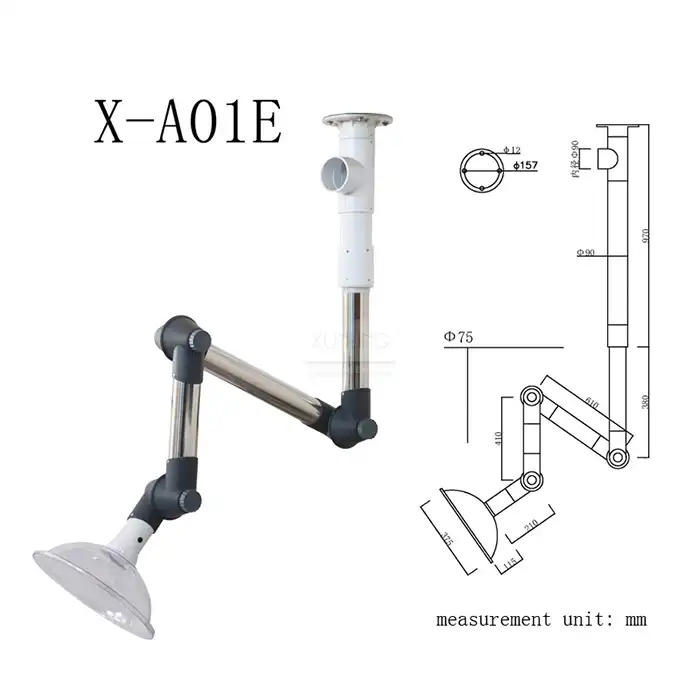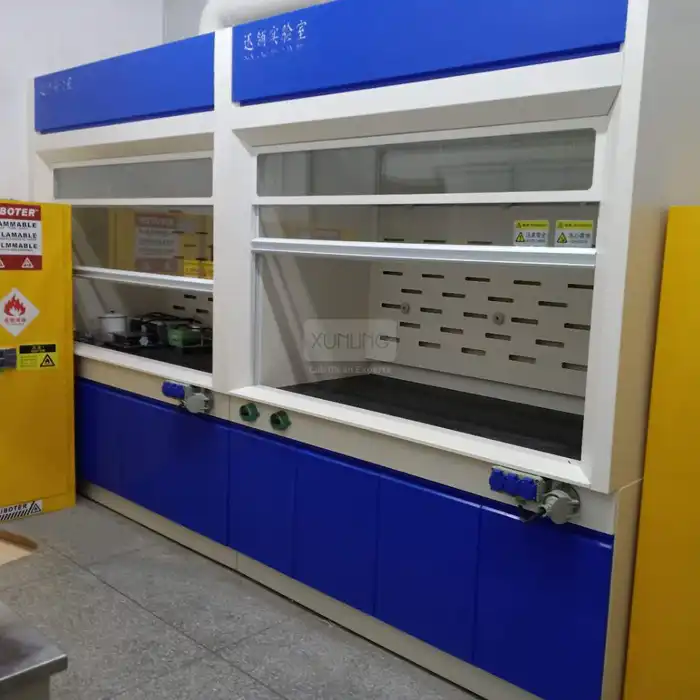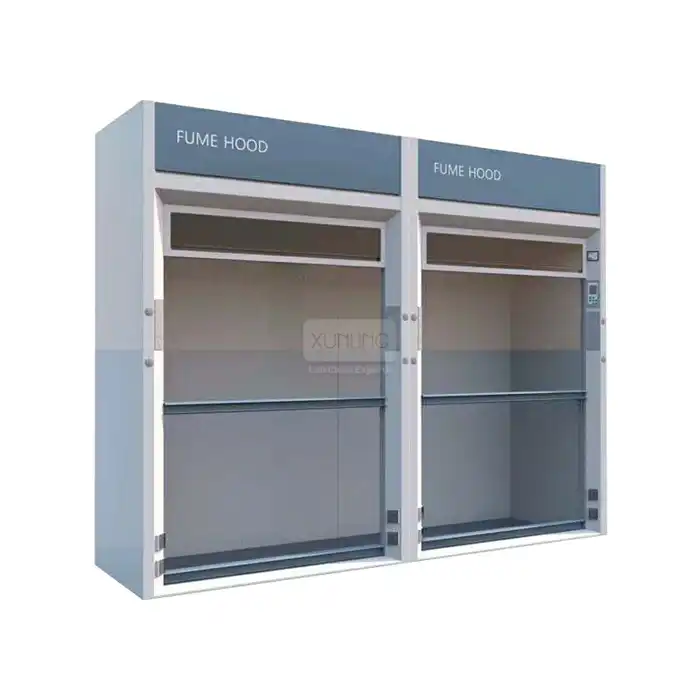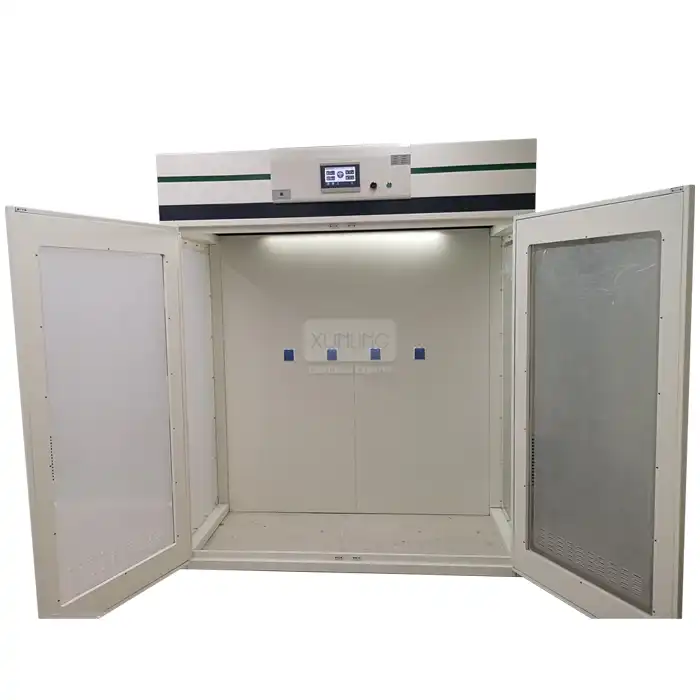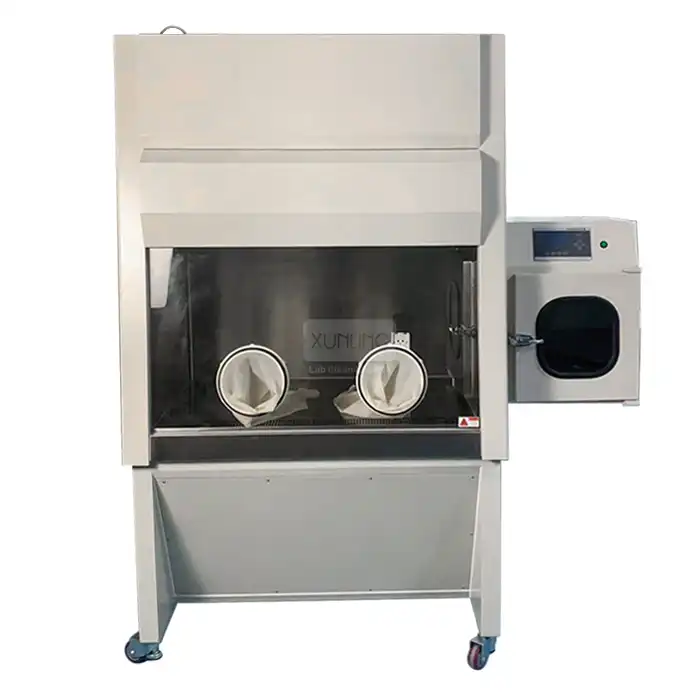
What Is a Lab Vent Hood and How Does It Work?
2025-07-28 15:55:43
In the realm of laboratory safety and environmental control, lab vent hoods (also known as Laboratory Fume Hoods) stand as critical infrastructure components. These specialized enclosures are designed to protect laboratory personnel from exposure to hazardous chemicals, vapors, and particulates generated during scientific procedures. A lab vent hood works by creating a controlled airflow environment that captures, contains, and exhausts potentially dangerous substances away from the workspace. With advanced filtration systems and precise engineering, modern lab vent hoods not only safeguard researchers but also contribute to maintaining overall laboratory air quality and compliance with stringent safety regulations. Understanding how these essential safety devices function is crucial for anyone working in scientific, medical, or industrial laboratory settings.
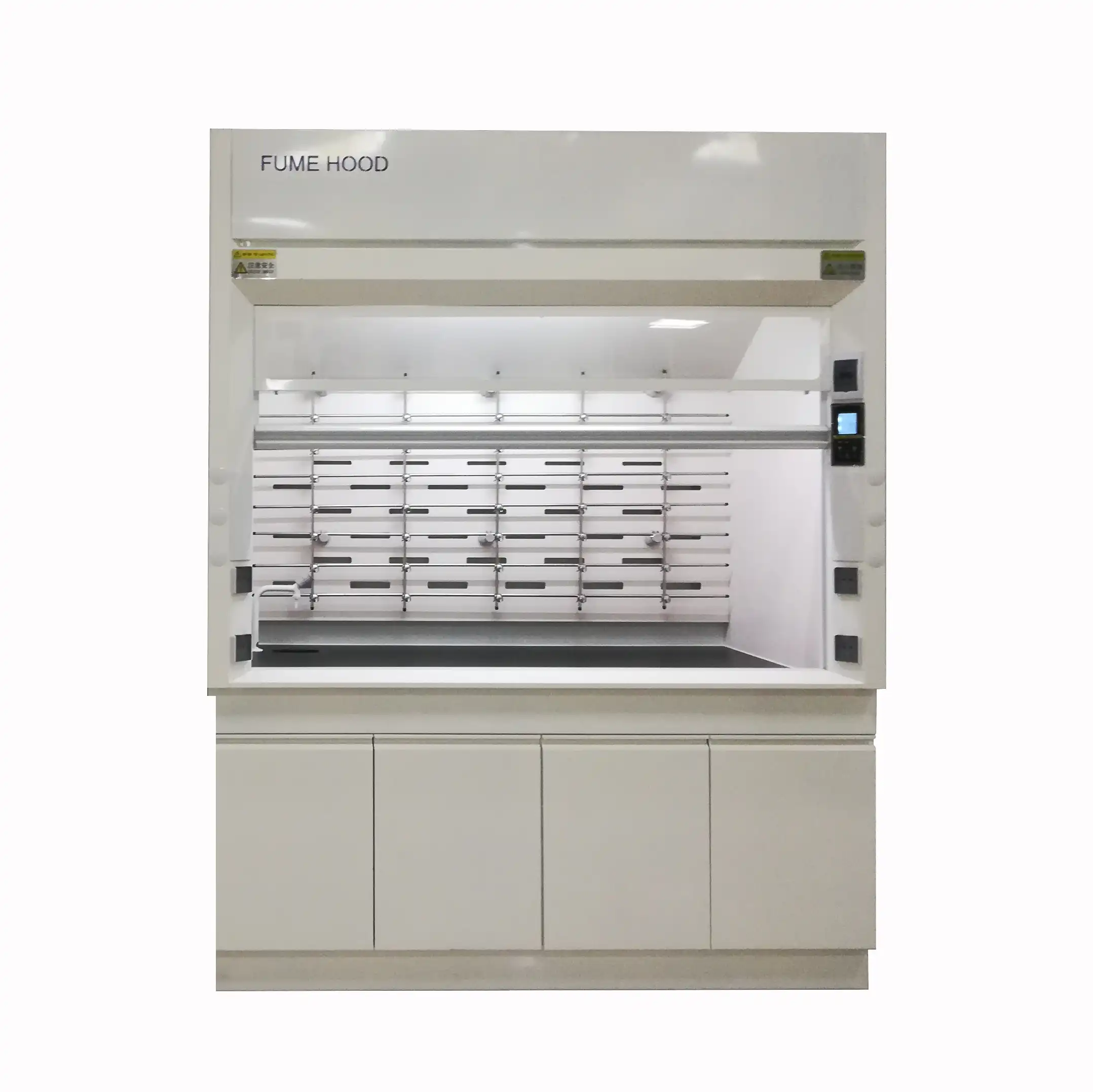
The Fundamental Design and Working Principles of Lab Vent Hoods
Airflow Dynamics and Containment Mechanisms
The core functionality of a lab vent hood hinges on its carefully engineered airflow dynamics. These sophisticated systems maintain a negative pressure environment that prevents hazardous substances from escaping into the laboratory. In standard operation, a lab vent hood draws ambient air from the laboratory through its face opening, creating a protective air barrier between lab personnel and potentially dangerous materials. This constant, directional airflow moves at an optimal velocity—typically between 0.3 and 0.6 meters per second—to effectively capture and transport vapors, gases, and particulates away from the breathing zone of researchers. The precise engineering ensures that contaminated air travels through the hood's internal chamber and into the exhaust system, rather than diffusing into the laboratory environment. This containment mechanism represents the primary safety function of lab vent hoods, making them indispensable in facilities where hazardous substances are handled regularly.
Exhaust Systems and Ventilation Technology
The exhaust system forms the backbone of any effective lab vent hood installation. Modern lab vent hoods employ sophisticated ventilation technology that typically includes a series of ducts, fans, and air treatment components working in concert to safely remove contaminated air from the laboratory environment. Xi'an Xunling's lab vent hoods feature intelligent airflow control systems that continuously monitor surface wind speed, automatically adjusting exhaust rates to maintain optimal performance under varying conditions. These systems integrate seamlessly with building HVAC infrastructure, ensuring proper dilution and discharge of hazardous substances. The exhaust components are constructed from corrosion-resistant materials like polypropylene or stainless steel, capable of withstanding exposure to strong acids, alkalis, and high temperatures—critical for long-term reliability in demanding laboratory environments. The ventilation technology in premium models like the XL-PH series complies with international standards such as EN 14175 and ASHRAE 110, guaranteeing consistent performance and safety across various laboratory applications.
Control Systems and Safety Features
Modern lab vent hoods incorporate advanced control systems and safety features that enhance both user protection and operational efficiency. Xi'an Xunling's laboratory fume hoods are equipped with comprehensive monitoring capabilities that provide real-time feedback on critical performance parameters. The control panel displays vital information including face velocity readings, sash position, and exhaust flow rates, allowing operators to verify safe working conditions at a glance. Safety features include 5mm tempered glass windows with angle limiters that optimize both visibility and containment, emergency shutdown capabilities that activate in case of system failure, and airflow alarms that alert users to potentially dangerous conditions. These intelligent systems also contribute to energy efficiency by modulating exhaust rates based on actual usage, reducing operational costs without compromising safety. The integration of LED shadowless lighting systems further enhances visibility while minimizing maintenance requirements, creating an optimal working environment for precise laboratory procedures.
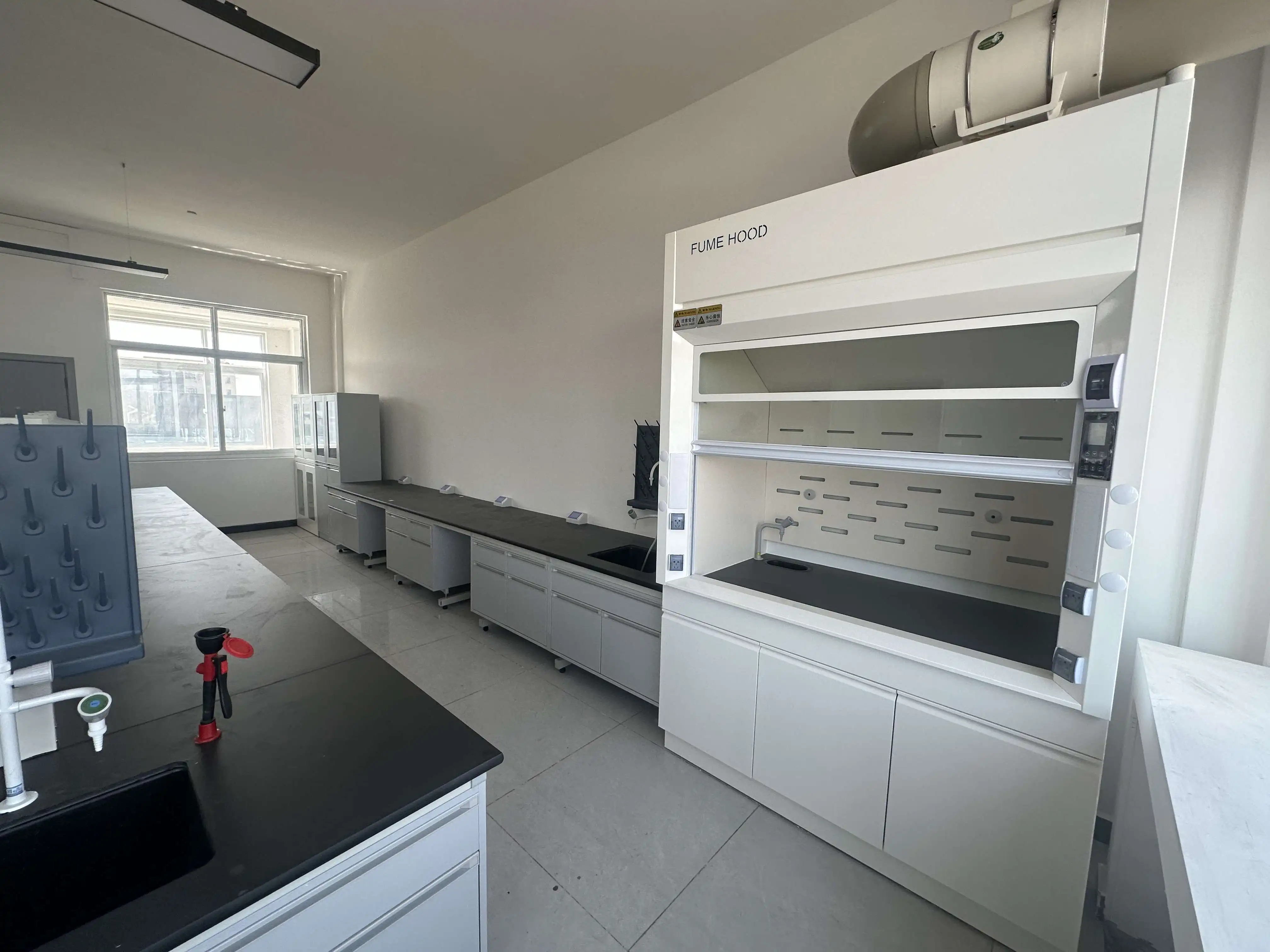
Types and Applications of Laboratory Vent Hoods
Conventional Ducted Fume Hoods
Conventional Ducted Fume Hoods represent the most common and versatile type of lab vent hood available in today's market. These systems connect directly to building exhaust infrastructure, channeling hazardous fumes and vapors outside the facility through a network of ducts. Xi'an Xunling's ducted fume hood solutions, including models like the XL-PH1200, XL-PH1500, and XL-PH1800, are engineered to provide reliable containment across a wide spectrum of laboratory applications. These units feature adjustable airflow speeds ranging from 0.3 to 0.6 m/s, ensuring optimal capture and containment of hazardous substances under varying conditions. The polypropylene construction offers exceptional chemical resistance, making these hoods suitable for applications involving corrosive chemicals and aggressive reagents. Conventional ducted fume hoods excel in settings where consistent handling of hazardous materials occurs, such as in chemical synthesis laboratories, pharmaceutical research facilities, and academic institutions. Their robust design and compliance with international standards like CE, ISO, and ASHRAE 110 make them the preferred choice for applications requiring maximum protection and reliability in demanding laboratory environments.
Ductless Filtration Fume Hoods
Ductless filtration fume hoods represent an innovative alternative to traditional ducted systems, offering flexibility and cost-efficiency for specific laboratory applications. These self-contained units operate by drawing contaminated air through specialized filtration media that capture and neutralize hazardous substances before recirculating clean air back into the laboratory environment. Xi'an Xunling's ductless lab vent hood solutions feature advanced modular designs that accommodate various filter types, including HEPA filters for particulates, activated carbon for organic vapors, and specialized media for specific chemical families. This adaptability makes ductless systems particularly valuable in facilities where architectural constraints prevent conventional ducting installation or in laboratories that frequently reconfigure their spaces. The filtration efficiency meets stringent international standards, providing protection comparable to ducted systems for appropriate applications. These units are ideal for light to moderate chemical usage scenarios, teaching laboratories, quality control testing, and temporary research setups. The elimination of external ducting requirements not only reduces installation costs but also contributes to energy conservation by preserving conditioned laboratory air rather than exhausting it outside the building.
Specialized and Custom Fume Hood Solutions
The diverse nature of modern laboratory research demands specialized and custom fume hood solutions tailored to unique application requirements. Xi'an Xunling Electronic Technology Co., Ltd. has developed expertise in designing and manufacturing customized lab vent hood systems that address specific research needs and space constraints. These specialized solutions include walk-in fume hoods for large equipment or apparatus setups, perchloric acid hoods with wash-down systems to prevent dangerous salt accumulation, radioisotope hoods with additional containment features for handling radioactive materials, and distillation hoods with extended height to accommodate tall apparatus assemblies. Each custom solution incorporates the core safety principles of conventional lab vent hoods while adding application-specific features that enhance functionality and protection. The company's engineering team works closely with clients to develop tailored solutions that match precise research protocols, laboratory layouts, and safety requirements. These custom systems maintain compliance with relevant international standards while addressing unique challenges posed by specialized research applications. With over 1,100 employees and five production bases, Xi'an Xunling possesses the manufacturing capacity to deliver these sophisticated custom solutions with the same quality assurance and attention to detail that characterizes their standard product lines.
Safety Standards and Performance Considerations
International Compliance and Certification Requirements
Adherence to international standards and certification requirements stands as a cornerstone of lab vent hood safety and performance. Xi'an Xunling's laboratory fume hoods are engineered to meet or exceed the most stringent global standards, including EN 14175 (European standard for fume cupboards), ASHRAE 110 (American standard for fume hood testing), and various ISO certifications that govern laboratory equipment safety. These comprehensive standards establish performance metrics for containment efficiency, face velocity consistency, airflow visualization, and structural integrity under various operating conditions. Compliance validation involves rigorous testing protocols that simulate worst-case scenarios to ensure protection even under challenging circumstances. The CE certification on Xi'an Xunling products confirms conformity with European health, safety, and environmental protection requirements, while ISO 9001:2015 certification validates the quality management systems governing their design and production processes. Additionally, their lab vent hoods adhere to RoHS directives limiting hazardous substances and NFPA guidelines for fire protection. This multi-faceted compliance framework provides laboratory managers and safety officers with documented assurance that their fume hood installations will deliver consistent protection and performance across all critical parameters.
Maintenance and Testing Procedures
Regular maintenance and testing procedures are essential for ensuring the continued effectiveness and safety of lab vent hood systems. Xi'an Xunling's lab vent hoods are designed with maintenance accessibility in mind, featuring quick-release baffle structures that facilitate internal cleaning and inspection without specialized tools. A comprehensive maintenance program for these systems typically includes quarterly inspection of airflow sensors and control systems, semi-annual examination of mechanical components such as sash mechanisms and exhaust fans, and annual certification testing by qualified professionals. The certification process involves face velocity measurements at multiple points across the hood opening, smoke visualization tests to verify containment patterns, and tracer gas challenges that quantitatively assess capture efficiency under standardized conditions. These procedural safeguards help identify potential issues before they compromise safety or performance. Xi'an Xunling provides detailed maintenance documentation and technical support to ensure proper upkeep of their lab vent hood systems, with their 21 service centers strategically located to provide prompt assistance when needed. By following established maintenance and testing protocols, laboratory facilities can maximize the operational lifespan of their fume hood investments while maintaining uncompromised safety protection for their personnel.
Energy Efficiency and Sustainability Considerations
As laboratories worldwide increasingly prioritize sustainability, energy efficiency has become a critical consideration in lab vent hood selection and operation. Traditional fume hoods can consume substantial energy through continuous air exhaust, potentially accounting for 30-60% of a laboratory's total energy usage. Xi'an Xunling addresses this challenge through innovative designs that maintain safety while reducing environmental impact. Their lab vent hood systems incorporate variable air volume (VAV) technology that modulates exhaust rates based on sash position and actual usage patterns, significantly reducing energy consumption during periods of inactivity. Advanced control algorithms optimize face velocity to the minimum required for safe containment, typically 0.3-0.5 m/s rather than higher traditional settings. The incorporation of high-efficiency motors and aerodynamically optimized components further reduces power requirements while maintaining performance standards. For applications suited to ductless technology, their filtration-based systems eliminate the energy penalties associated with exhausting conditioned laboratory air. These energy-efficient design elements contribute to reduced operational costs over the equipment lifecycle while supporting institutional sustainability goals and green laboratory certification programs. The intelligent design approach ensures that safety remains the paramount consideration while still addressing the growing imperative for environmental responsibility in scientific research facilities.
Conclusion
Lab vent hoods are essential safety devices that protect laboratory personnel from hazardous substances through controlled airflow and exhaust systems. From conventional ducted models to specialized custom solutions, Xi'an Xunling Electronic Technology Co., Ltd. delivers high-performance lab vent hoods that meet rigorous international standards while addressing diverse research needs. By combining robust engineering, innovative features, and commitment to safety, these systems create safer laboratory environments for scientific discovery and innovation.
Ready to enhance your laboratory safety with industry-leading vent hood solutions? Xi'an Xunling Electronic Technology Co., Ltd. offers cost-effective, reliable, and customizable lab vent hoods backed by comprehensive after-sales support and a 5-year warranty. Our one-stop service includes OEM support, fast 5-day delivery, and expert technical assistance. Contact our team today at xalabfurniture@163.com to discuss how our lab vent hood solutions can transform your laboratory's safety and efficiency.
References
1. Johnson, A.E. & Martin, K.L. (2023). Laboratory Ventilation Systems: A Comprehensive Guide to Fume Hood Design and Implementation. Journal of Laboratory Safety, 45(3), 112-128.
2. Zhang, H., Wilson, R., & Thompson, B. (2024). Comparative Analysis of Energy Consumption in Traditional and Variable Air Volume Fume Hood Systems. Energy Efficiency in Scientific Facilities, 18(2), 203-219.
3. American National Standards Institute. (2022). ANSI/ASHRAE Standard 110-2022: Methods of Testing Performance of Laboratory Fume Hoods. Atlanta, GA: ASHRAE.
4. European Committee for Standardization. (2023). EN 14175-3:2023: Fume cupboards - Type test methods. Brussels: CEN.
5. Martinez, S.V. & Rahman, T. (2024). Advances in Filtration Technology for Ductless Fume Hood Applications. International Journal of Laboratory Design, 12(1), 45-62.
6. Peterson, D.C., Smith, J.W., & Chen, Y. (2023). Laboratory Safety Standards and Compliance: A Global Perspective on Fume Hood Certification. Safety Science Quarterly, 87, 324-339.
YOU MAY LIKE







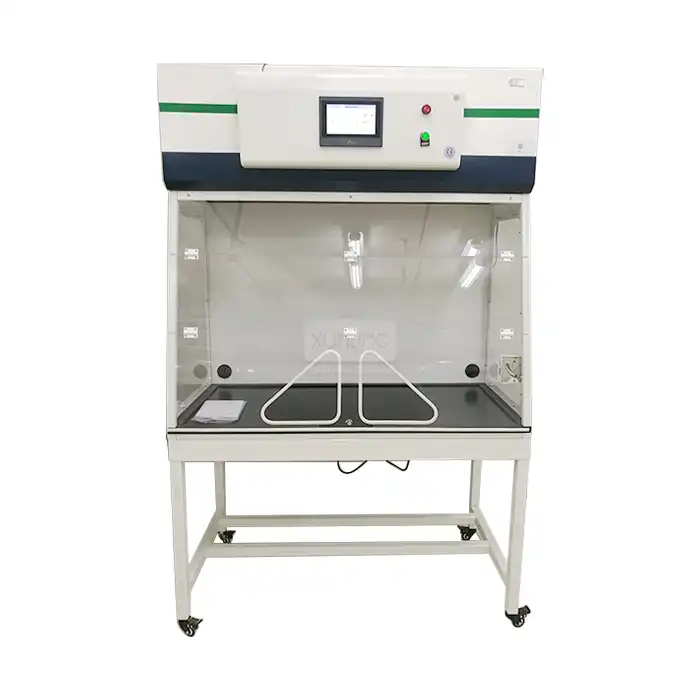
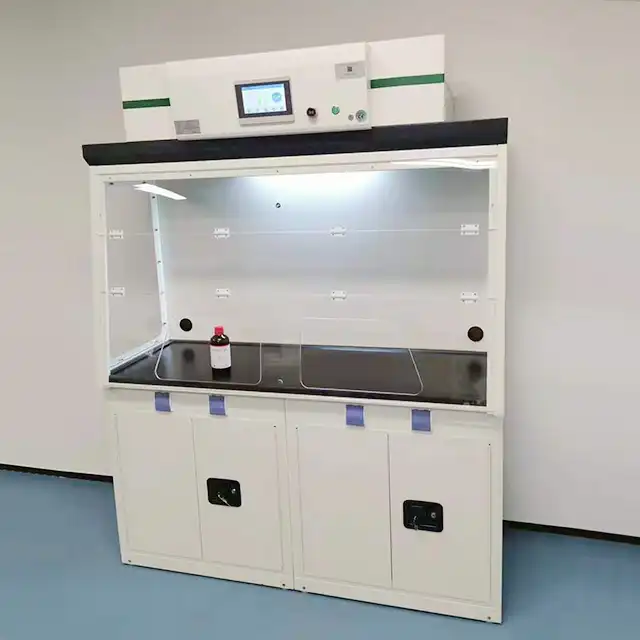
_1741664313364.webp)
